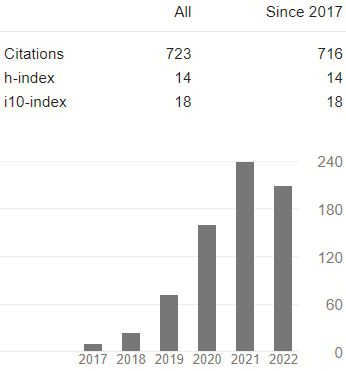PENGARUH FRAUD DIAMOND DALAM MENDETEKSI FINANCIAL STATEMENT FRAUD
STUDI PADA PERUSAHAAN MANUFAKTUR YANG TERDAFTAR DI BURSA EFEK INDONESIA TAHUN 2014 – 2016
DOI:
https://doi.org/10.25170/jara.v12i2.86Keywords:
Financial Statement Fraud, total asset accrual, earnings management, fraud diamondAbstract
This study aimed to examine the effect of fraud diamond which is consists of four elements to the financial statement fraud proxied with earnings management. This study examines the pressure variables by the proxy financial target (ROA), opportunity variables by proxy ineffective monitoring (KOIN), rationalization variables by proxy total asset accruals (TATA), and capability variables by proxy changes of director (PESI). The data of the research from annual reports of manufacturing company listed on the Stock Exchange during the period 2014 – 2016. This study uses purposive sampling to select a representative sampling and the collected data analysis using multiple linear regression analysis. The results showed that the variable rationalization as measured by total asset accruals significant to financial statement fraud. While, the variable of opportunity, pressure, and capability have no effect on financial statement fraud.
References
Agung, I Gusti Ngurah (1992).Metode penelitian sosial: pengertian dan pemakaian praktis 1. Jakarta: Gramedia Pustaka Utama
Albrecht, S. W. Albrecht, C. C. & Albrecht, C. O. (2006). Fraud examination.Canada: Thomson South – Western, 11–15.
Amaliah, B. N., Januarsi, Y. &Ibrani, E. Y. (2015).Perspektif fraud diamond theory dalam menjelaskan earning management non-GAAP pada perusahaan terpublikasi di Indonesia. JAAI, 19(1), 51–67.
Annisya, M., Lindrianasari &Asmaranti, Y. (2016).Pendeteksian kecurangan laporan keuangan menggunakan fraud diamond. Jurnal Bisnis dan Ekonomi, 23(1).
Aprilia, R. (2017). Pengaruh financial stability, personal financial need, ineffective monitoring, change in auditor, dan change in director terhadap financial statement fraud dalam perspektif fraud diamond: Studi empiris pada perusahaan manufaktur yang terdaftar di Bursa Efek Indonesia periode 2012–2014. JOM.Fekon, 4 (1).
Arifin, Z. (2005). Teori keuangan & pasar modal. Yogyakarta: Ekonisia.
Devy, K.L.S., Wahyuni, M.A. & Sulindawati, N.L.G.E. (2017).Pengaruh frequent number of CEO’s picture, pergantian direksi perusahaan dan external pressure dalam mendeteksi fraudulent financial reporting.(Studi empiris pada perusahaan farmasi yang listing di BEI periode 2012–2016). Jurnal S1 Ak Universitas Pendidikan Ganesha, 8(2).
Diaz, R.& Jufrizen. (2014). Pengaruh return on assets (ROA) dan return on equity (ROE) terhadap earning per share (EPS) pada perusahaan asuransi yang terdaftar di Bursa Efek Indonesia. Jurnal Manajemen & Bisnis, 14(2), 129.
Ghozali, I. (2009). Ekonometrika. Semarang: Badan Penerbit Universitas Diponegoro.
Hanani, M.D.P. (2016). Kecenderungan kecurangan laporan keuangan dengan analisis diamond fraud pada perusahaan perbankan yang listing di BEI (tahun 2013-2015). Skripsi. Universitas Muhammadyah. Yogyakarta
Hanani,M.D.P.(2016), KecenderunganKecurangan LaporanKeuangan Dengan Analisis Diamond Pada Perusahaan Perbankan Yang Listing Di BEI (Tahun 2013-2015).Skripsi,Universitas Muhammadiyah Yogyakarta,Yogyakarta.
Hanifa, S.I. (2015). Pengaruh fraud indicators terhadap fraudulent financial statement (Studi empiris pada perusahaan yang listed di BEI tahun 2008 – 2013). Skripsi.Semarang: Universitas Diponegoro.
Harahap, S. S. (2015). Teori akuntansi. Jakarta: Raja Grafindo Persada.
Hery.(2016). Auditing dan asuransi. Jakarta: Grasindo.
Kartikahadi, H., Sinaga, R. U., Syamsul, M.&Siregar, S. V. (2012). Akuntansi keuangan berdasarkan SAK berbasis IFRS. Jakarta: Salemba Empat.
Munawir, S. (2010).Analisa laporan keuangan. Yogyakarta: Liberty.
Murhadi, W. R. (2015). Analisis laporan keuangan. Jakarta: Salemba Empat.
Norbarani, L. (2012). Pendeteksian kecurangan laporan keuangan dengan analisis fraud triangle yang diadopsi dalam Sas No.99. Skripsi.Semarang: Universitas Diponegoro.
Nurbaiti, Z.&Hanafi, R. (2017).Analisis pengaruh fraud diamond dalam mendeteksi tingkat accounting irregularities. Jurnal Akuntansi Indonesia, 6(2), 167–184.
Oktarigusta, L. (2017). Analisis fraud diamond untuk mendeteksi terjadinya financial statement fraud di perusahaan (Studi empiris pada perusahaan manufaktur yang terdaftar di BEI tahun 2012–2015).Jurnal.Daya Saing. Jurnal Ekonomi Manajemen Sumber Daya Vol.19, No.2, Desember 2017
Putra, A. P.(2015). Fraud triangle (pressure, opportunity, and rationalization) and the level of accounting irregularities in Indonesia. Simposium Nasional Akuntansi 18.Universitas Indonesia.
Putri, I G. A. E. P., Sulindawati, Ni Luh Gede E. & Atmadja, A. T. (2017). Pengaruh financial target dan ineffective monitoring terhadap terjadinya fraud: Studi kasus pada koperasi serba usaha dana Pertiwi Seririt, Kecamatan Seririt, Kabupaten Buleleng, Provinsi Bali. Jurnal Akuntansi Program S1, 7 (1).
Putriasih, K. Herawati, Ni Ny. T. & Wahyuni, M. A. (2016). Analisis fraud diamond dalam mendeteksi financial statement fraud: Studi empiris pada perusahaan manufaktur yang terdaftar di Bursa Efek Indonesia tahun 2013–2015. Jurnal Akuntansi Program S1, 6(3).
Rice.(2016). Pengaruh faktor keuangan terhadap manajemen laba dengan corporate governance sebagai variabel moderating.Jurnal Wira Ekonomi Mikroskil, 6(1)
Sekaran, U. (2003). Research methods for business. USA: John Wiley & Sons.
Sihombing, K. S. (2014). Analisis fraud diamond dalam mendeteksi financial statement fraud: Studi empiris pada perusahaan manufaktur yang terdaftar di Bursa Efek Indonesia. Diponegoro Journal of Accounting, 2(2), 5, 29, 55, 68, 79, 81 .
Skousen, C.J. (2008). Detecting and predicting financial stability: The effectiveness of the fraud triangle and SAS N0.99.Journal of Accounting and Auditing. SSRN (Social Science Research Network),10,12
Tuanakotta, Th. M. (2010). Akuntansi forensik dan audit investigatif. Jakarta: Salemba Empat.
Wells, J.T. (2014). Principles of fraud examination. USA: John Wiley & Sons.
Wolfe, D. T. & Hermanson, D. R. (2004).The fraud diamond: Considering thefour elements of fraud.CPA Journal, 74(12), 1, 2, 3.
Downloads
Published
Issue
Section
License
Authors who publish with this journal agree to the following terms:
- Authors retain copyright and grant the journal right of first publication with the work simultaneously licensed under a Creative Commons Attribution-ShareAlike 4.0 International License that allows others to share the work with an acknowledgment of the work's authorship and initial publication in this journal.
- Authors are able to enter into separate, additional contractual arrangements for the non-exclusive distribution of the journal's published version of the work (e.g., post it to an institutional repository or publish it in a book), with an acknowledgment of its initial publication in this journal.
- Authors are permitted and encouraged to post their work online (e.g., in institutional repositories or on their website) prior to and during the submission process, as it can lead to productive exchanges, as well as earlier and greater citation of published work.














